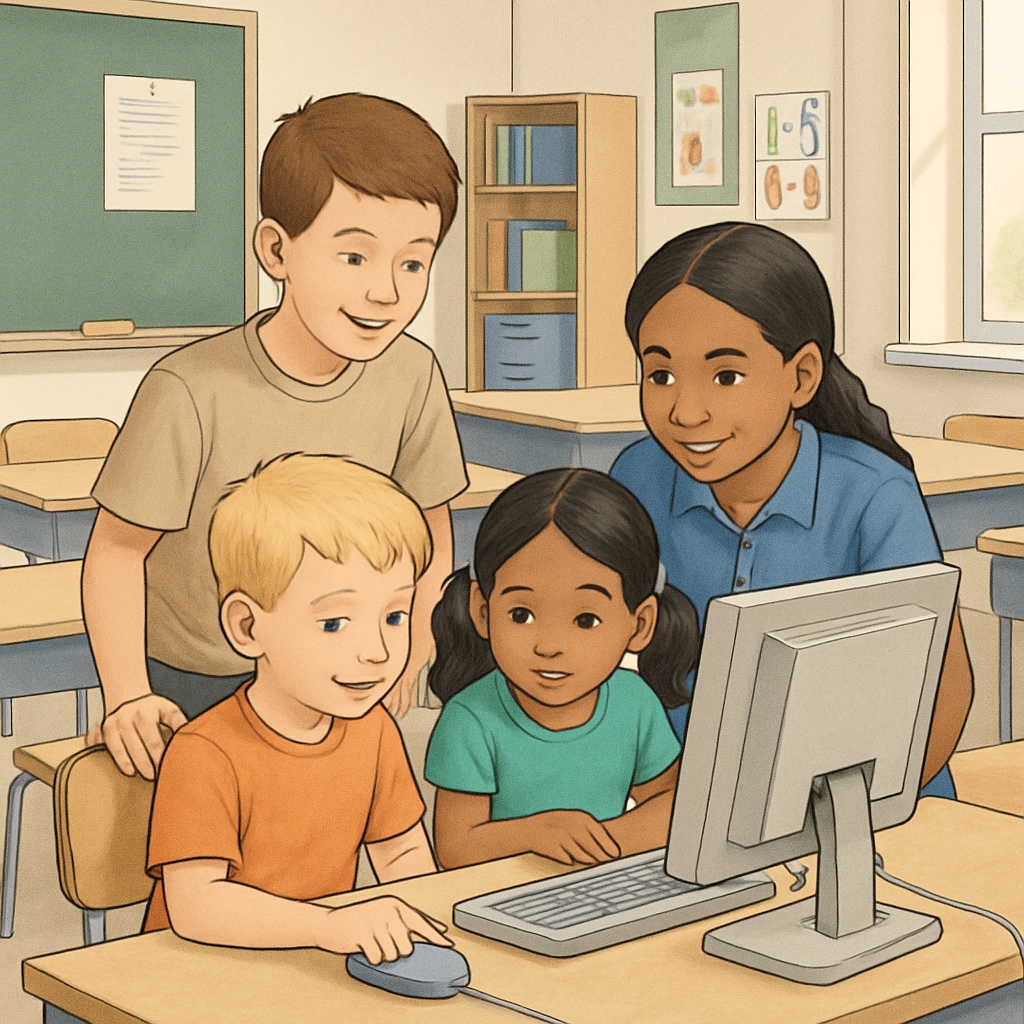When it comes to fostering meaningful educational experiences, the combination of “kindergarten peer programs, cross-grade activities, and computer skills learning” offers a unique opportunity for growth. Collaborative projects involving young learners and older elementary school students not only bridge age gaps but also create a dynamic environment for mutual mentorship. This article explores creative ways to design and implement such projects, ensuring they cater to varying skill levels and promote a sense of community and shared learning.
Why Cross-Grade Collaboration is Valuable
Cross-grade collaboration is an innovative approach to education that fosters empathy, teamwork, and skill development. Younger children, such as kindergarteners, benefit from the guidance of older peers, while fourth graders gain leadership and mentoring skills. This dynamic interaction enhances both groups’ social and cognitive growth.
For example, activities like shared storytelling allow kindergarteners to develop their listening and imagination skills while fourth graders enhance their ability to explain and engage. Similarly, structured computer-based tasks offer both groups an opportunity to explore technology in a safe, supervised environment.

Designing Activities for Different Skill Levels
When planning cross-grade activities, it’s crucial to account for the varying abilities of kindergarteners and fourth graders. Here are some creative ideas:
- Storytelling Workshops: Pair students to create a short story. Kindergarteners contribute ideas and drawings, while fourth graders help write and assemble the story.
- Interactive Computer Lessons: Use educational software that includes tasks simple enough for younger children but allows older students to guide and assist.
- Science Experiments: Choose hands-on projects like making baking soda volcanoes, where fourth graders can explain the science behind the activity while younger children enjoy the visuals.
- Art Collaboration: Create a mural where kindergarteners fill in colors, and fourth graders design outlines or patterns.
Such activities ensure that all participants feel engaged and contribute meaningfully, regardless of their developmental stage.
Incorporating Computer Skills Learning
In today’s digital age, integrating computer skills into cross-grade activities is both relevant and beneficial. Introducing structured computer tasks not only equips children with essential digital literacy but also fosters teamwork. Here are a few ideas:
- Digital Storytelling: Use simple tools like Canva or PowerPoint to create a collaborative story. Kindergarteners can choose images and dictate text, while fourth graders manage the software.
- Basic Programming: Platforms like Scratch Jr. allow younger students to create animations with the guidance of older peers.
- Typing Games: Pair students for typing challenges, where fourth graders assist kindergarteners in learning keyboard basics.
These activities not only teach technical skills but also encourage problem-solving and communication. For more information on digital literacy in education, you can refer to digital literacy on Britannica.

Tips for Successful Implementation
To ensure the success of cross-grade programs, educators should focus on the following:
- Careful Pairing: Match students based on personalities and interests to promote compatibility.
- CLEAR Goals: Define the learning objectives for each activity to ensure both groups benefit.
- Supervision: Provide guidance to avoid frustration and keep students on track.
- Reflection Time: Conclude each session with a discussion, allowing students to share what they learned.
By following these tips, teachers can create a harmonious learning environment that nurtures curiosity and collaboration. For further reading on peer mentorship in education, visit peer mentorship on Wikipedia.
Ultimately, cross-grade activities offer a wealth of benefits. They teach children to appreciate diverse perspectives and provide opportunities to develop essential life skills like patience, communication, and teamwork. With thoughtful planning, these programs can become a cornerstone of any school’s educational framework.


